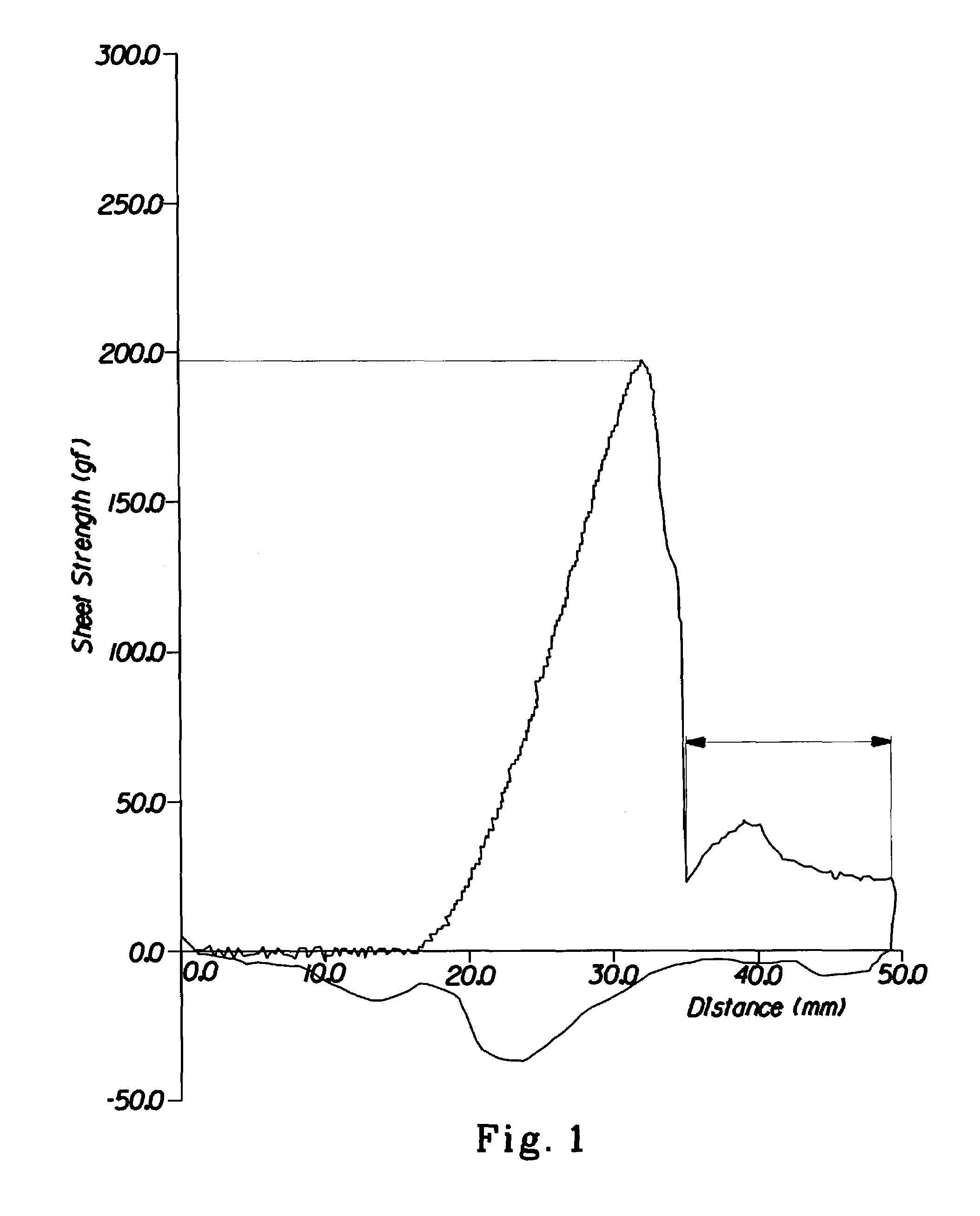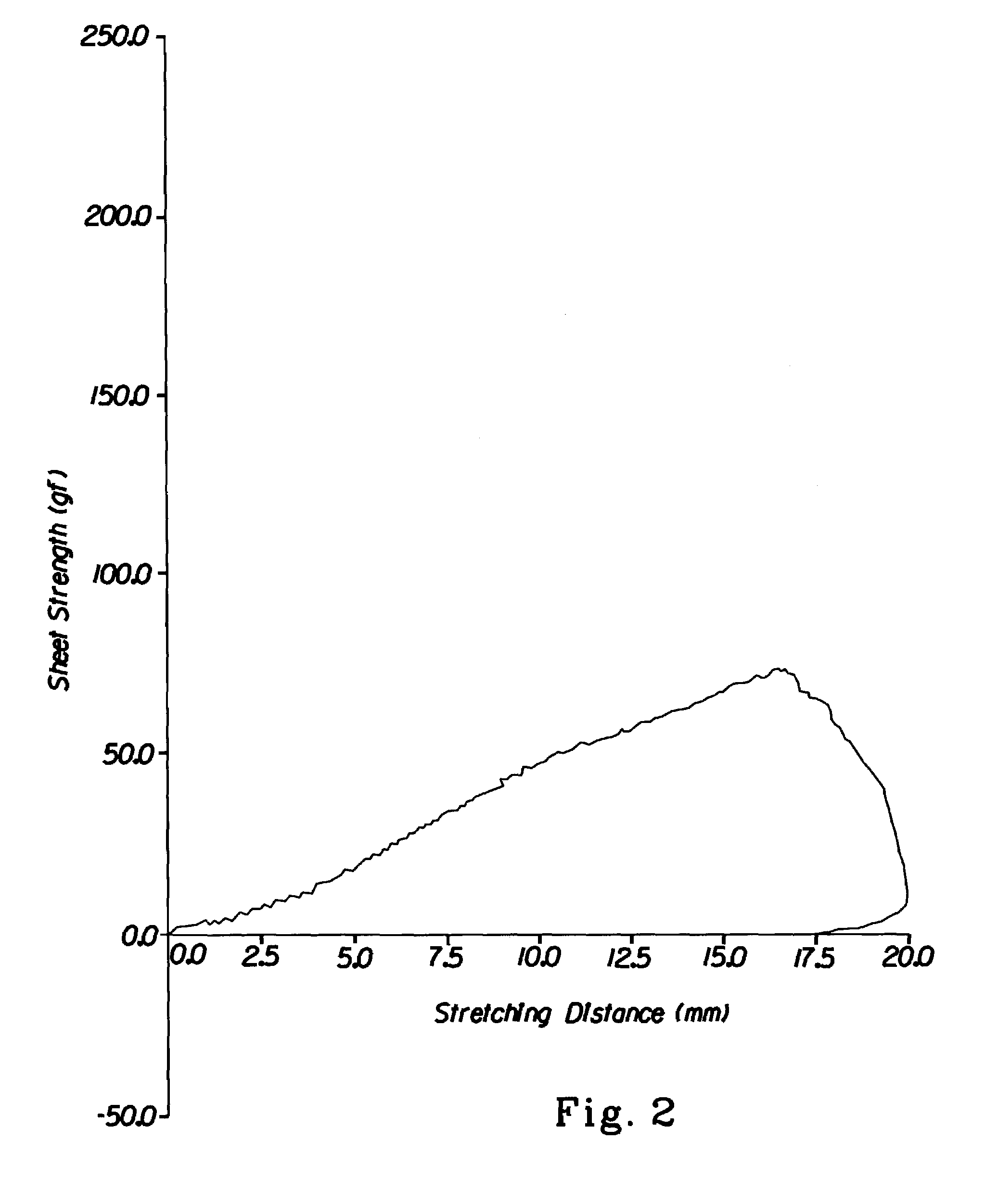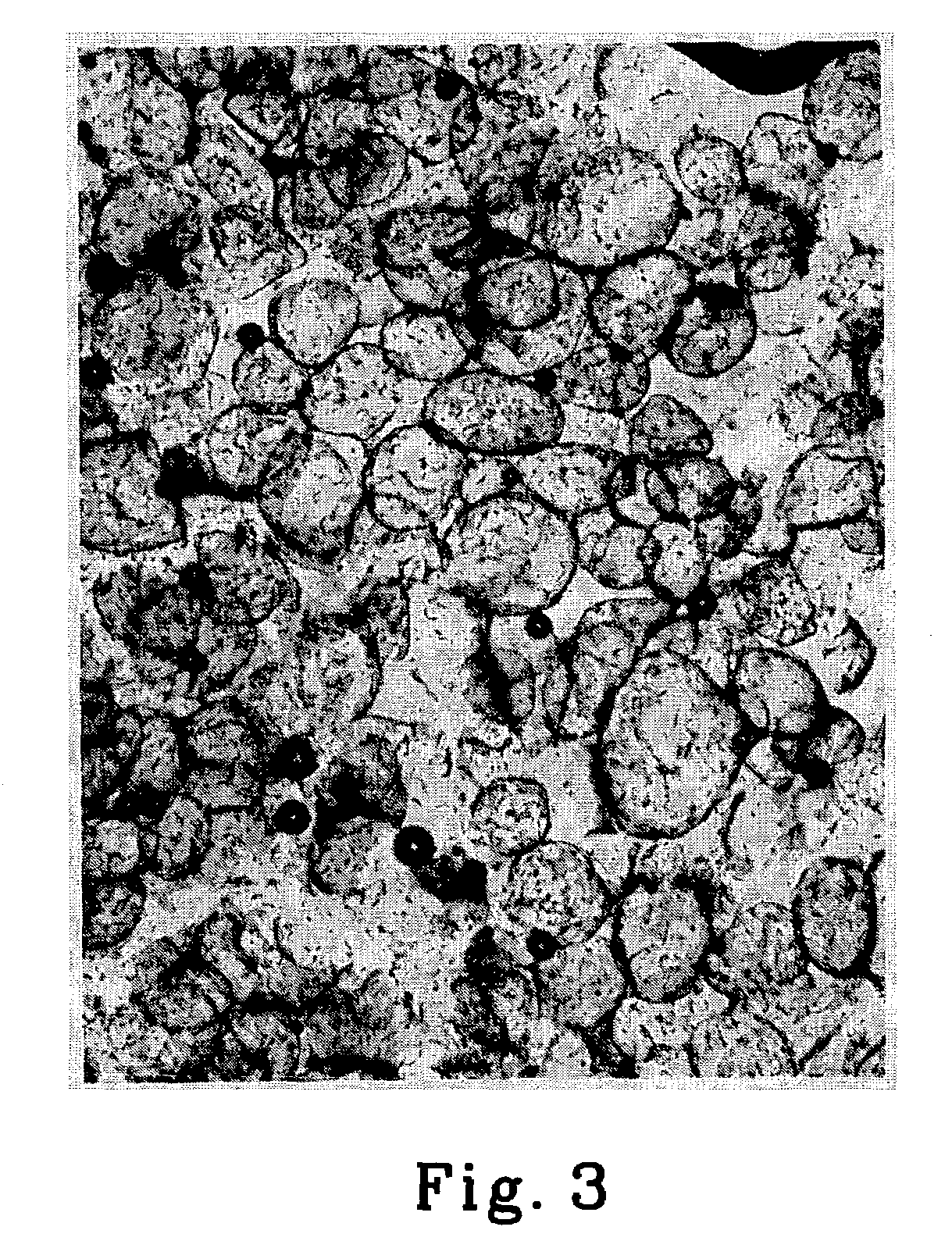Dehydrated potato flakes
a technology of dehydrated potato and flakes, which is applied in the field of dehydrated potato flakes, can solve the problems of sticky dough, tacky or gummy dough, dough that is sticky, and is often broken or shredded by the food processor when sheeted at high speed,
- Summary
- Abstract
- Description
- Claims
- Application Information
AI Technical Summary
Benefits of technology
Problems solved by technology
Method used
Image
Examples
examples 1 – 3
EXAMPLES 1–3
[0149]Examples 1–3 are prepared from (1) pre-conditioned potato slabs, (2) a combination of slabs, slivers and nubbins and (3) slivers and nubbins. The potato pieces are processed according to the method of the present invention. The potato mash is drum dried. The physical properties of the dehydrated flakes are measured and microscopic observations are made. The processing parameters and physical properties of the dehydrated potato flakes are listed in Table 1 and Table 2 below.
[0150]
TABLE 1Process parameters for making dehydrated potato flakesProcess ParametersExample 1Example 2Example 3% Pre-conditioned Slabs100600% Slivers & nubbins040100Cooking Pressure (PSI)555Cooking time (min)192123Drum Speed (rev / sec)10.510.510.5Sheet Thickness (mm)0.20.20.2
[0151]
TABLE 2Physical properties of dehydrated potato flakesFlake PropertiesExample 1Example 2Example 3Moisture (%)6.06.06.0WAI7.98.68.1Amylose (%)2022.022.5HPV (BU)*290—320CPV (BU)200—220Microscopic50% broken cells50% broken...
examples 4 – 5
EXAMPLES 4–5
[0152]The following examples compare dehydrated potato flakes prepared according to a conventional process conditions to dehydrated potato flakes prepared according to the present invention. See Table 3. The raw potato used to produce the flakes of Example 4 is fast cooked (i.e, temperature rise of about 75° F. / minute until the potato slabs reach a temperature of about 180° F.). The raw potatoes used to produce the potato flakes of Example 5 is slow cooked (i.e., temperature rise of about 12° F. / minute until the potato slabs reach a temperature of about 180° F.).
[0153]
TABLE 3Comparison of dehydrated potato flakesProcess ParametersExample 4Example 5% Slabs100100Cooking Pressure (psi)4510Cooking time (min)5028Drum Speed (rev / sec)4.5WAI10.38.5Amylose (%)8.422.3HPV (BU)*400280CPV (BU)200200
example 6
A dough composition is prepared from the potato flakes of the present invention having the physical properties listed below. The dough composition comprises 30% water and 70% of the following mixture of ingredients:
[0154]
IngredientWt. % in mixturePotato flakes78Wheat Starch9Corn Meal9Malto-dextrin4
[0155]The physical properties of dehydrated potato flakes used are shown in the following table:
[0156]
Flake PropertiesExampleMoisture (%)6.0WAI8.5Amylose (%)24HPV (BU)*200CPV (BU)200Microscopic Observation50% broken cells*Brabender Units
[0157]The potato flakes, wheat starch and corn meal are blended in a Turbulizer® mixer. The maltodextrin is dissolved in the water and added to the blend. The blend is mixed to form a loose, dry dough.
[0158]The dough is sheeted by continuously feeding it through a pair of sheeting rolls forming an elastic continuous sheet without pin holes. Sheet thickness is controlled to 0.02 inches (0.05 cm). The dough sheet strength is 211 gram force.
[0159]The dough she...
PUM
 Login to View More
Login to View More Abstract
Description
Claims
Application Information
 Login to View More
Login to View More - R&D
- Intellectual Property
- Life Sciences
- Materials
- Tech Scout
- Unparalleled Data Quality
- Higher Quality Content
- 60% Fewer Hallucinations
Browse by: Latest US Patents, China's latest patents, Technical Efficacy Thesaurus, Application Domain, Technology Topic, Popular Technical Reports.
© 2025 PatSnap. All rights reserved.Legal|Privacy policy|Modern Slavery Act Transparency Statement|Sitemap|About US| Contact US: help@patsnap.com



